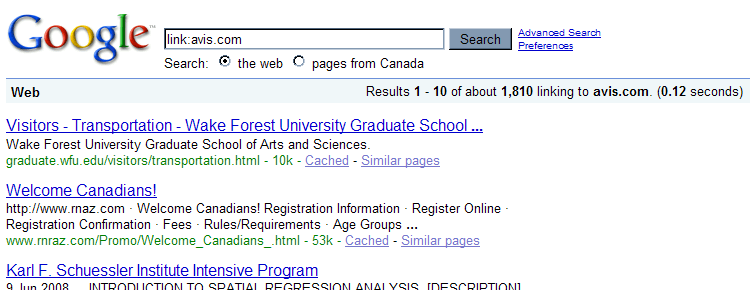Do They Have a Better Reputation?
At this point, you have a list of competitors that you care about and an idea of how you’re doing against them in terms of traffic and some other basic analytical metrics. But what do Internet users think of them?
You can apply community listening tools to your competitors just as easily as you can apply them to your own online presence, and most of the tools we’ve seen in earlier chapters can compare your products or services to those of competitors. You can also measure what the Web’s authorities, such as Google and Technorati, think of you.
One of the basic elements of online reputation is the referring
link. It’s the basis for Google’s PageRank algorithm. You can
find out how many sites link to a particular competitor with the link
prefix. To use this, simply search for link:<weburl.com> in Google (Figure 16-4). You’ll get a list
of all sites that link to the URL you enter.

Figure 16-4. Analysis of sites that link into Avis.com
Comparing the number of inbound links in this way can show you a measure of a site’s popularity. Inbound links affect everything from Google PageRank to Technorati scores, and a sudden change in the number of inbound links shows that a site is getting more attention and growing the early stages of its long funnel.
Compete.com also offers referral analysis tools (Figure 16-5), but free accounts are limited to only a few referring ...
Get Complete Web Monitoring now with the O’Reilly learning platform.
O’Reilly members experience books, live events, courses curated by job role, and more from O’Reilly and nearly 200 top publishers.

